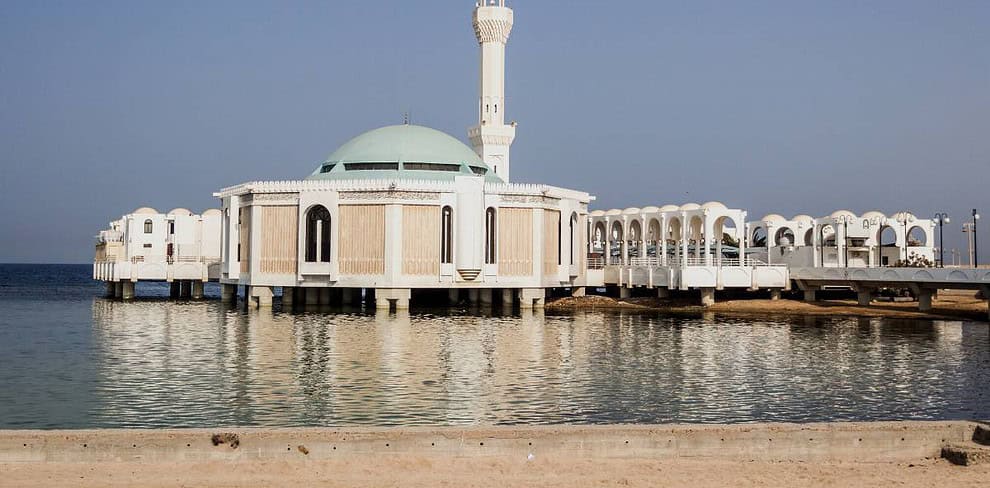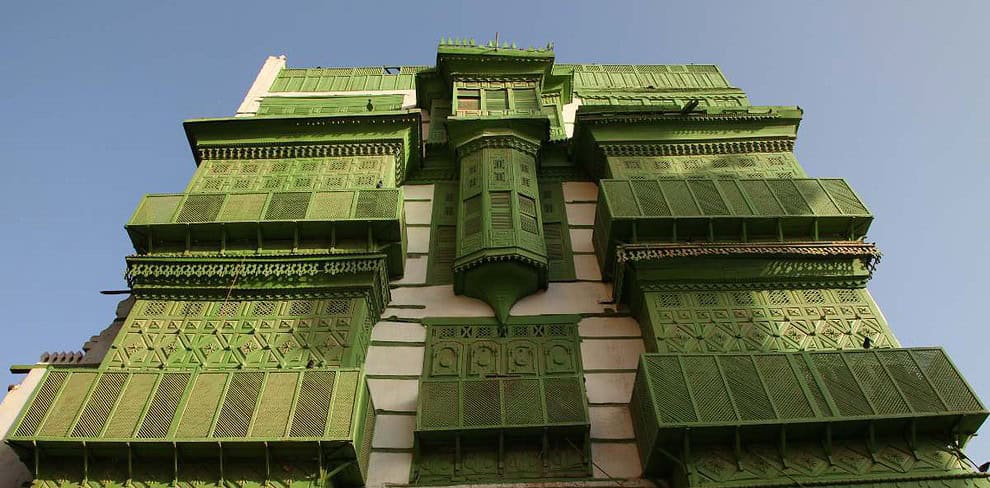Table of Contents
Explore the rich culture of Saudi Arabia as we offer you a comprehensive insight into the customs of this nation, featuring its diverse and vibrant heritage, which includes traditions, values, and unique customs and practices.
Saudi Arabians highly prioritize hospitality, extending warm welcomes to their guests. Family holds a central role in Saudi society, fostering strong connections and a profound sense of community. It’s essential to acknowledge that Saudi Arabia culture is in a constant state of evolution, influenced by historical events, regional dynamics, and global interactions.
Understanding the culture of Saudi Arabia can provide valuable perspectives into the intricate and diverse society of the Kingdom.
Saudi Arabia Culture
Here are the most important points to begin learning about Saudi Arabia culture and customs:
- Ethnic Diversity: Saudi Arabia is home to a diverse mix of ethnic groups, each with its own customs and traditions. Arabs make up the majority of the population, but there are also significant expatriate communities from various countries.
- Languages: Arabic is the official language of Saudi Arabia, and it is widely spoken throughout the country. Various Arabic dialects are used in different regions.
- Islamic Practices: Saudi Arabia is the birthplace of Islam, and the religion plays a central role in Saudi Arabia culture and daily life. Islamic practices, including the five daily prayers, fasting during Ramadan, and adherence to Islamic dietary laws, are fundamental to Saudi society. The majority of Saudis practice Sunni Islam.
- Greeting Etiquette: Greetings are an essential part of Saudi Arabia culture. Handshakes are common between men, while men and women usually do not shake hands. Instead, they greet each other verbally with polite phrases.
- Traditional Clothing: Traditional Saudi clothing includes the “thobe” for men and the “abaya” for women. The style and design of these garments may vary by region.
- Cuisine: Saudi Arabian cuisine features dishes like “kabsa” (spiced rice with meat), “mandi,” and various grilled meats. It reflects a fusion of Middle Eastern flavors with a distinct Saudi touch.
- Hospitality: Saudi Arabians are known for their generous hospitality. When guests visit, they are offered traditional Arabic coffee and dates. It is considered impolite to decline such offerings.
- Respect for Elders: Respect for elders is a deeply ingrained custom in Saudi Arabian society. Younger individuals show deference to their seniors through words and actions.
- Arts and Crafts: Saudi Arabia has a rich tradition of arts and crafts, including intricate calligraphy, pottery, and weaving.
- Music and Dance: Traditional Saudi music includes instruments like the “oud” and “tabla.” Folk dances are an integral part of cultural celebrations.
- Celebration of Festivals: Saudi Arabians celebrate various religious and cultural festivals, with Eid al-Fitr and Eid al-Adha being significant ones. These celebrations often involve special prayers, feasts, and gatherings with family and friends.
- Family and Community: Family is central to Saudi society, and strong community bonds are essential for support and social cohesion.
- Gender Roles: Gender roles are traditionally defined, with men and women often occupying distinct social spheres. However, changes are occurring, particularly in urban areas, with greater participation of women in various aspects of life.
- Marriage and Matchmaking: Arranged marriages are a prevalent custom in Saudi Arabia. Families play a central role in matchmaking, and the union is seen as a commitment not only between individuals but also between families.
- Historical Significance: Saudi Arabia’s historical and religious significance, with the cities of Mecca and Medina, has a profound influence on its culture and identity.
These customs are essential aspects of Saudi Arabia culture and are readily visible in everyday life, reflecting the country’s rich cultural heritage and strong connection to its Islamic roots.
Saudi Arabia Traditional Attire
Saudi Arabia Traditional Attire reflects the nation’s cultural heritage, regional distinctions, and historical significance. The clothing worn by Saudis holds both functional and cultural significance, showcasing their identity and values.

1. Regional Variation: Saudi Arabia’s traditional clothing varies by region, influenced by local climate and customs. In the hot and arid central and southern regions, lightweight and breathable fabrics are favored, while in the cooler northern areas, heavier and more layered garments are common.
2. Men’s Thobe: The “thobe” is a widely recognized traditional Saudi garment for men. It is a long, loose-fitting robe, typically white, though other colors may be worn. The thobe is often accompanied by a head covering or “ghutra” (headscarf) held in place by an “agal” (a cord-like headband).
3. Women’s Abaya: Saudi women commonly wear the “abaya,” a long black cloak that covers their regular clothing. The abaya is often paired with a “niqab” (face veil) or a “hijab” (headscarf). The abaya and its variations allow for modesty and adherence to Islamic dress codes.
4. Regional and Tribal Attire: Various regions and tribal communities in Saudi Arabia have their distinctive clothing styles, often characterized by vibrant colors, embroidery, and intricate designs. These outfits reflect both cultural heritage and a sense of belonging to a particular group.
5. Modesty and Cultural Significance: Traditional Saudi clothing emphasizes modesty and adherence to Islamic principles. The choice of fabrics, colors, and accessories may convey social status, regional identity, or personal preferences.
6. Special Occasion Attire: Saudis dress elaborately for special events and celebrations, such as weddings, Eid festivals, and religious gatherings. These occasions call for luxurious and finely crafted traditional clothing adorned with intricate details and jewelry.
7. Adaptation to Modernity: While traditional attire remains significant, urbanization and modernization have led to the incorporation of Western-style clothing in daily life, particularly in urban areas like Riyadh and Jeddah. Many Saudis blend traditional and contemporary fashion, reflecting changing lifestyles and global influences.
Saudi Arabia traditional attire serves as a representation of the country’s cultural diversity, history, and Islamic heritage. It also underscores the importance of modesty and adherence to religious values while allowing for regional and individual expressions of identity.
Saudi Arabia Marriage Traditions
Saudi Arabia Marriage Traditions are deeply influenced by Islamic customs and are an integral part of the country’s culture and society. These traditions vary slightly among different regions and communities but generally adhere to common Islamic principles.

1. Islamic Principles: Marriage in Saudi Arabia is governed by Islamic laws and principles, and it is considered a sacred and highly valued institution. Islamic customs and rituals are followed throughout the marriage process.
2. Arranged Marriages: Arranged marriages are prevalent in Saudi Arabia, with families often taking the lead in finding suitable partners for their children. Compatibility in terms of family background, social status, and religious beliefs is highly emphasized.
3. Matchmakers: Matchmakers, often known as “waseet” or “khatib,” assist in the matchmaking process. They help identify potential partners and facilitate the initial meetings between families.
4. Engagement (Khutbah): The engagement process begins with an official proposal from the groom’s family to the bride’s family. This proposal is called “khutbah” and marks the formal commitment of the couple to marry. Once accepted, the engagement is celebrated with a small gathering of family and close friends.
5. Wedding Celebrations: Saudi weddings are joyous and extravagant affairs that can last for several days. They typically involve traditional rituals, feasts, music, and dancing. The main wedding ceremony includes the signing of the marriage contract, known as the “katb al-kitab,” which is often held at a mosque or the bride’s home.
6. Bride Price (Mahr): The groom is required to provide a “mahr” or dowry to the bride as part of the marriage contract. The mahr serves as a financial commitment and security for the bride.
7. Bridal Attire: Brides in Saudi Arabia wear elegant and heavily adorned dresses, often accompanied by exquisite jewelry. The choice of attire varies by region, but traditional styles are cherished.
8. Post-Wedding Customs: After the wedding, various traditions may continue, including a celebratory feast hosted by the groom’s family, known as the “walima.” The couple may also have a “mukhruqah” ceremony, where the bride enters her new household.
9. Religious Significance: Marriage is a religious sacrament in Saudi Arabia, and the marriage contract adheres to Islamic principles. Islamic scholars may recite verses from the Quran during the ceremony, and prayers are offered for the couple’s well-being.
10. Family and Community Involvement: Saudi weddings are significant social events that involve extended families and the wider community. The community’s support and participation are essential for the success of the celebrations.
11. Contemporary Changes: While arranged marriages remain common, there is also a growing trend toward love marriages in urban areas and among the younger generation. However, even love marriages often involve adherence to traditional customs and ceremonies.
Saudi Arabia marriage traditions reflect the country’s strong adherence to Islamic values and the importance of family and community in the lives of its people. These traditions help preserve Saudi cultural heritage and maintain social bonds within society.
Saudi Arabia Food Culture
Saudi Arabia food culture is deeply rooted in tradition and influenced by the country’s geographical location, Islamic heritage, and historical significance as a crossroads of trade and culture in the Arabian Peninsula. Here are some key aspects of Saudi Arabian food culture:

- Regional Variation: Food from Saudi Arabia diverse geography, including coastal areas, deserts, and mountainous regions, has fostered a variety of regional cuisines. Each area integrates local ingredients and traditional cooking methods, contributing to a rich tapestry of flavors unique to each locality.
- Staple Foods: Rice, wheat, barley, and dates are staple foods in Saudi Arabia. Rice dishes are prevalent, with aromatic spices enhancing the flavors. Flatbreads, like “khobz” and “samboosa,” are also widely consumed.
- Use of Spices: Saudi Arabian cuisine incorporates a range of spices such as cumin, coriander, cinnamon, cardamom, and saffron, which contribute to the rich and aromatic flavors of dishes.
- Dates and Coffee: Dates hold cultural significance in Saudi Arabia and are often served as a symbol of hospitality. Arabic coffee, known as “gahwa,” is a traditional welcome drink served with dates to guests.
- Lamb and Camel Meat: Lamb is a common meat in Saudi cuisine, and camel meat is considered a delicacy in some regions. These meats are often prepared in various ways, such as grilling, stewing, or roasting.
- Seafood: Due to its extensive coastline along the Red Sea and the Arabian Gulf, Saudi Arabia has a thriving seafood culture. Fish, shrimp, and other seafood are staples in coastal regions.
- Ramadan Traditions: During the holy month of Ramadan, Muslims in Saudi Arabia engage in fasting from sunrise to sunset. The evening meal to break the fast, known as “iftar,” often includes a variety of traditional dishes and sweets.
- Hospitality: Saudi Arabians are known for their warm hospitality, and offering food to guests is a cherished tradition. Sharing meals with family and friends is a common practice, fostering a sense of community and togetherness.
- Traditional Restaurants: Saudi Arabia has a thriving restaurant culture, with traditional eateries, known as “mazaher,” serving local dishes. These restaurants offer an authentic dining experience.
- Modern Influences: In urban areas, Saudi Arabian cuisine has been influenced by global trends, leading to the presence of international fast-food chains and fusion restaurants. However, traditional dishes continue to hold a special place in the hearts of Saudis.
Cultural Celebrations: Special occasions and celebrations often revolve around food, with elaborate feasts prepared for weddings, Eid festivals, and other significant events.
Book our services
Our services as a travel agency in Saudi Arabia ensure that your journey is not only enjoyable but also informative and hassle-free. Saudi Arabia’s cultural delights, historical marvels, and natural wonders await your exploration with RJ Travel LLC. Our Saudi Arabia Private Tours are designed to immerse you in the rich cultural heritage, historical significance, and breathtaking landscapes of this extraordinary nation.
Contact Us and our team will make sure to help you plan your trip to Saudi Arabia when it’s safe and ready for travel. Whether you’re interested in joining a pre-arranged Saudi Arabia small group tour or creating a custom itinerary, we are here to make your Saudi Arabian adventure an unforgettable reality.
More About Saudi Arabia
[the-post-grid id=”50418″ title=”Saudi Arabia Main page”]
Book Your Trip to Saudi Arabia Today!
Embark on an unforgettable journey and explore the allure of Saudi Arabia through our exclusive tours.












